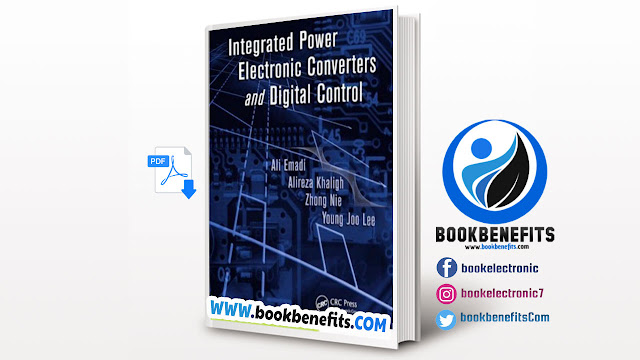Download Integrated Power Electronic Converters and Digital Control PDF
Integrated Power Electronic Converters and Digital Control PDF
Picture Of The Book :
About Of The Book :
With the demand for higher efficiencies, smaller output ripple, and smaller converter sizes for modern power electronic systems, conventional switched-mode power supplies could be replaced by integrated power electronic converters. An integrated converter is a synthesized device based on the overall system integration, which is simplified by the system objective and can implement the system functions similar to the discrete converters without integration. Based on the requirements of the design, integrated converters have reduced components, smaller sizes, lower weights, lower costs, higher efficiency, higher reliability, lower switching stresses, smaller power packing, wide conversion range, power factor correction and output regulation, and better performance. The first 14 chapters of this book describe various integrated power electronic converters such as boost type, buck type, and buck-boost type integrated topologies, as well as other integrated structures. Steady-state and dynamic analyses of boost integrated flyback rectifier/energy storage DC-DC (BIFRED) converters and buck integrated forward converters are then presented. Introduction to the non-isolated DC-DC converters such as buck, boost, and buck-boost converters are presented in Chapter 1. Chapter 2 is an introduction to isolated DC-DC converters such as flyback, forward, push-pull, full-bridge, and half-bridge converters. In Chapter 3, the basic concept of power factor correction and its application to buck, boost, buck-boost, Ćuk, single-ended primary inductor (Sepic), zeta, flyback, and forward converters are explained. Chapter 4 addresses the concept of integrated converters and the definition of integrated switched-mode power supplies. Chapters 5, 6, and 7 describe boost-type, buck-type, and buck-boost–type integrated topologies. Other types of integrated topologies are presented in Chapter 8. A steady-state analysis of the boost integrated flyback rectifier energy storage converter is demonstrated in Chapter 9. Chapter 10 presents the dynamic analysis of the buck integrated forward converter. Chapter 11 is an introductory chapter to the concept of synchronous rectification and its application to the non-isolated DC-DC buck, boost, and buck-boost converters. Application of synchronous rectification to the isolate converters such as flyback and forward converters are presented in Chapter 12. Chapter 13 presents the application of synchronous rectification to the integrated high-quality rectifier regulators. In addition, Chapter 14 demonstrates the application of the integrated switched-mode power converters for uninterruptible power supply and switched reluctance motor drive applications. The last two chapters of the book describe digital control based on digital signal processors (DSPs). Over the past several years, digital control based on general-purpose microprocessors, application-specific integrated circuits, DSPs, or programmable logic devices has become pervasive in power electronic applications. Especially, significant commercial strides have been made in digital power management and control. Power electronics-based companies have started introducing products that integrate digital power management and control integrated circuit solutions, both hybrid (analog and digital) and pure digital. In the meantime, system makers are looking seriously at the benefits of digital control and coming up with their own, often proprietary, products. These trends are occurring at various levels of implementation such as power conversion, converter management, board management, and rack management, which is digital power management of the system. Cost, space, flexibility, energy efficiency, and voltage regulation are the key factors in digital power management and implementation. This book addresses various applications of digital control techniques for power electronic converters and provides details on implementing digital control techniques using DSPs. Chapter 15 presents a comprehensive literature study of digital control techniques in power electronics. Finally, in Chapter 16, after an introduction to the implementation of the digital control techniques using DSPs, the hardware and software implementation of a non-inverting buck-boost converter is explained in detail. This book is recommended as a reference text for an advanced course in power electronics. This book is also an in-depth source for engineers, researchers, and managers who are working in power electronics and related industries. We would like to gratefully acknowledge the contributions of Mr. Ritesh Oza. Chapters 3, 11, 12, and 13 draw heavily from his graduate research work at the Illinois Institute of Technology. We would also like to acknowledge the efforts and assistance of the staff of CRC Press–Taylor & Francis Group.
Contents Of The Book :
Chapter 1 Non-isolated DC-DC Converters.
Chapter 2 Isolated DC-DC Converters.
Chapter 3 Power Factor Correction .
Chapter 4 Integrated Switched-Mode Power Converters.
Chapter 5 Boost-Type Integrated Topologies.
Chapter Buck-Type Integrated Topologies 6 .
Chapter 7 Buck-Boost Type Integrated Topologies .
Chapter 8 Other Types of Integrated Topologies.
Chapter 9 Steady-State Analysis .
Chapter 10 Dynamic Analysis .
Chapter 11 Synchronous Rectification.
Chapter 12 Synchronous Rectification with Flyback and Forward Converters.
Chapter 13 Synchronous Rectification for Integrated HighQuality Rectifier-Regulators .
Chapter 14 Integrated Switched-Mode Power Supplies Applications .
Chapter 15 Review of Digital Control Techniques in Power Electronics .
Chapter 16 Implementation of Digital Control Using Digital Signal Processors .
Information Of The Book :
Title: Integrated Power Electronic Converters and Digital Control.
Language: English.
Size: 12.5 Mb.
Pages: 339.
Format: PDF.
Author: Ali Emadi & Alireza Khaligh & Zhong Nie & Young Joo Lee.

